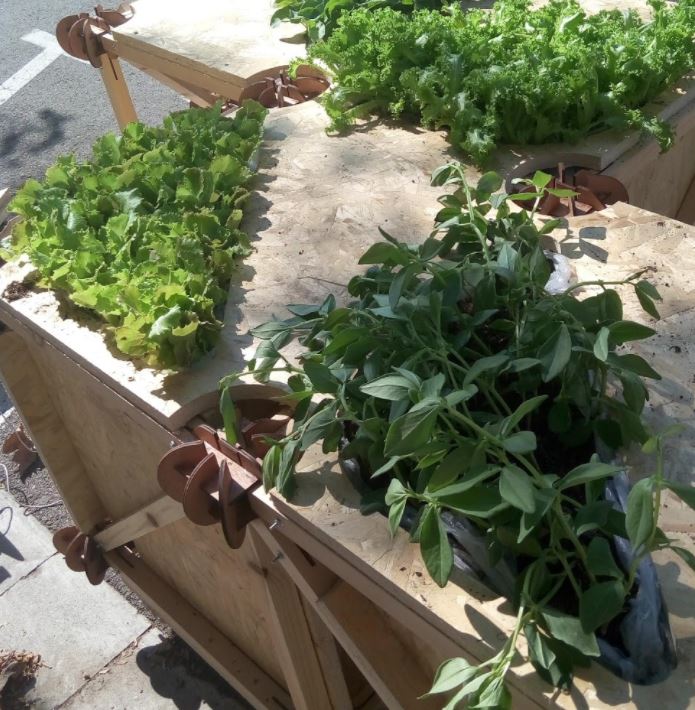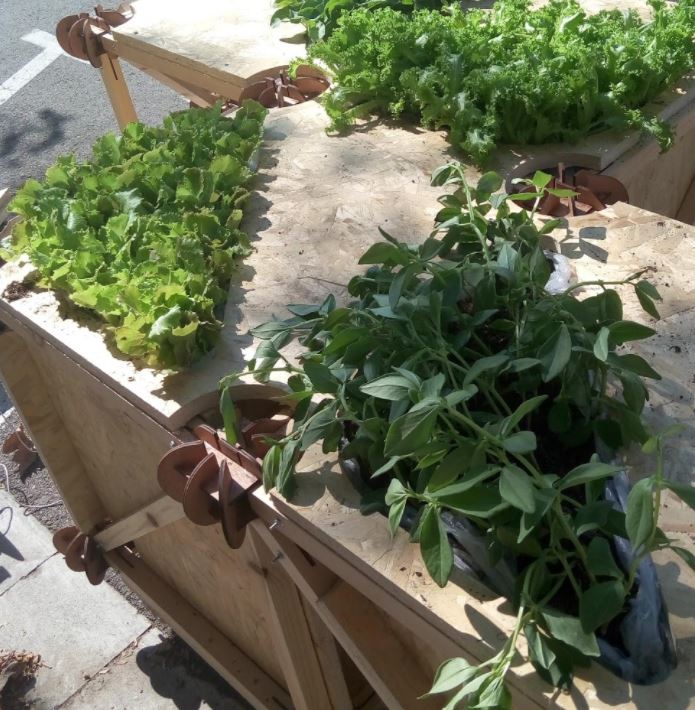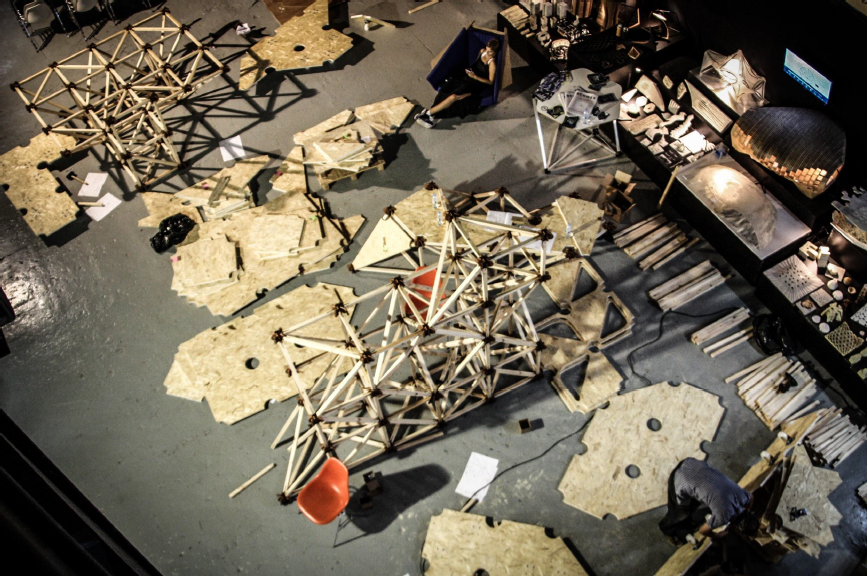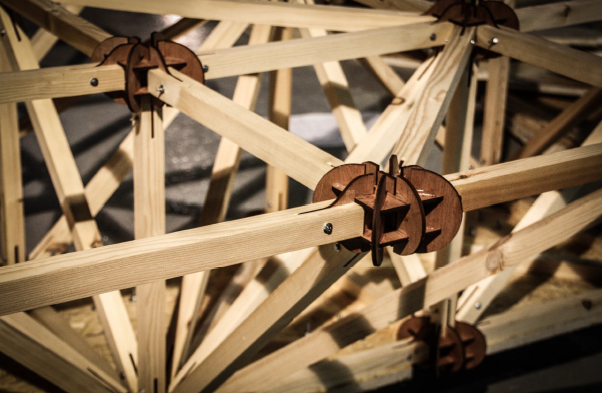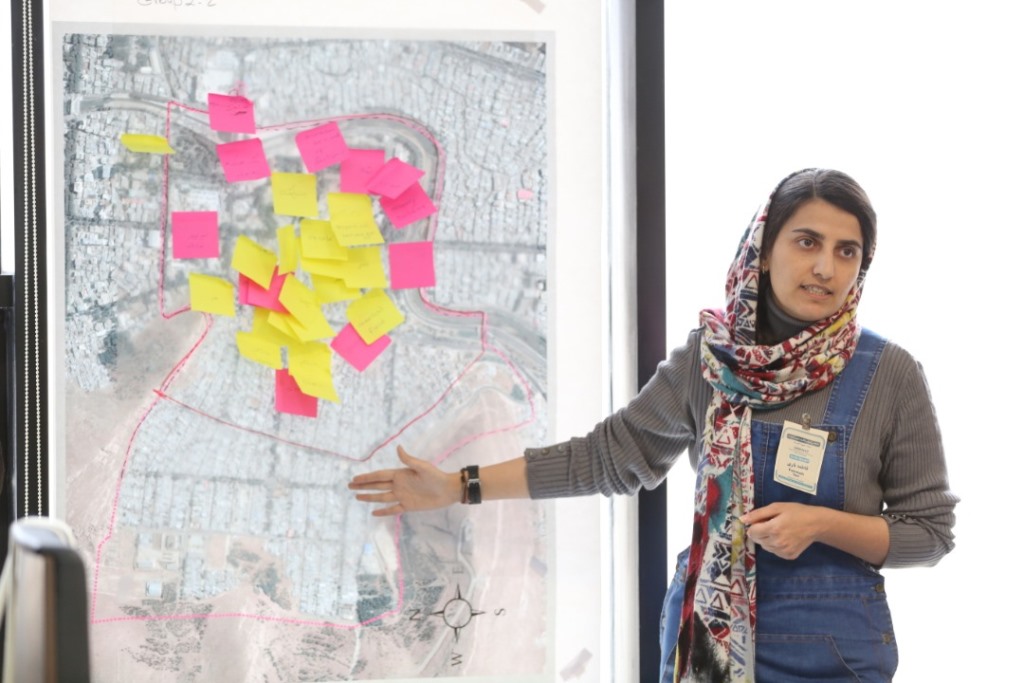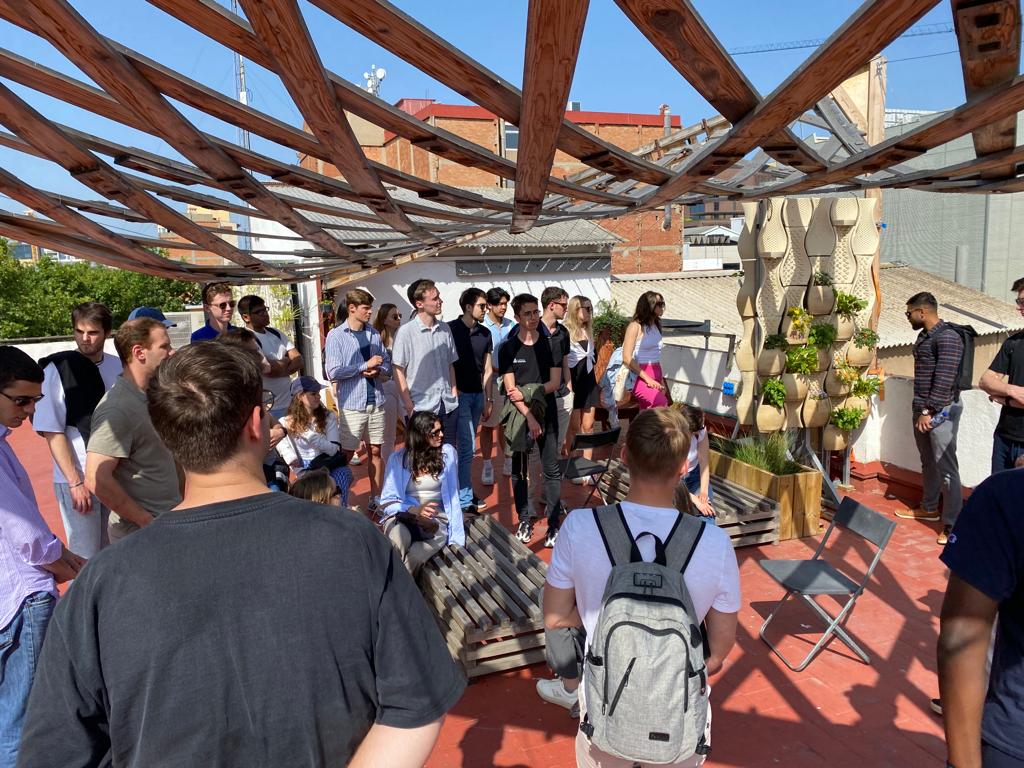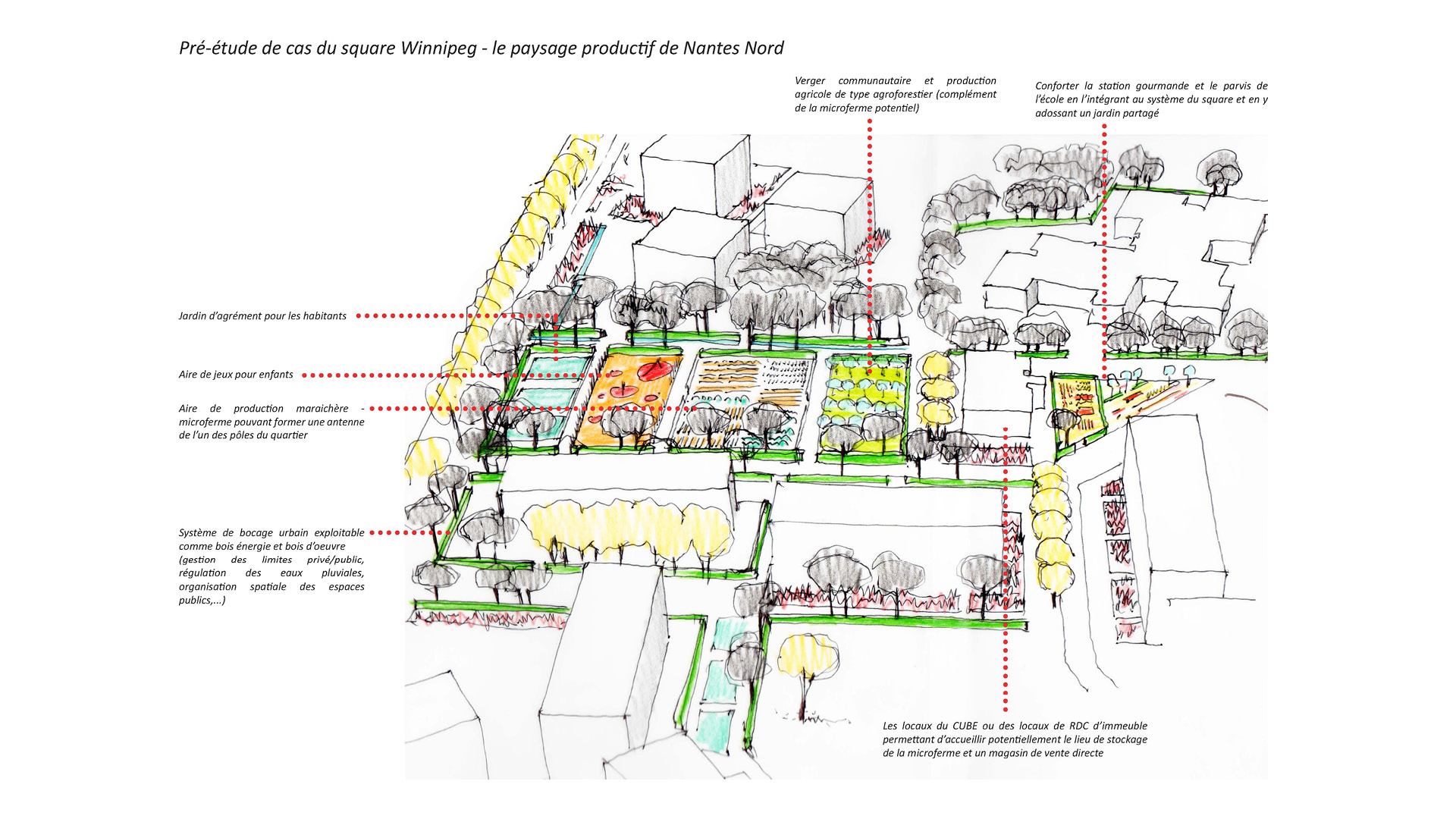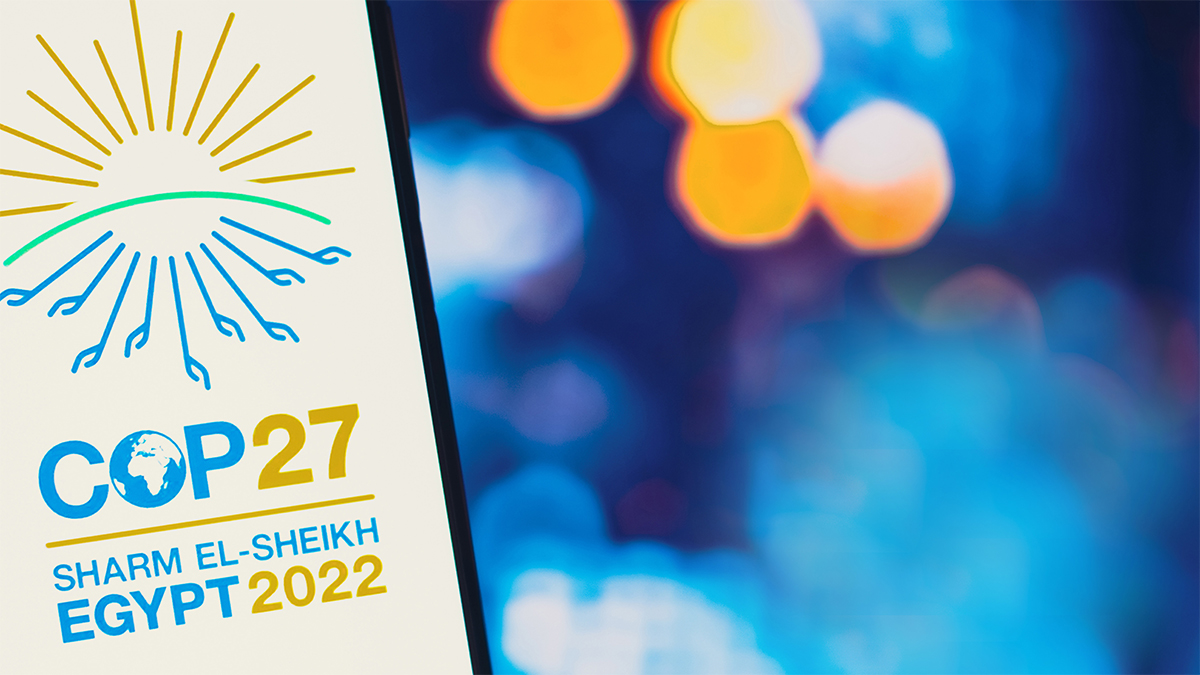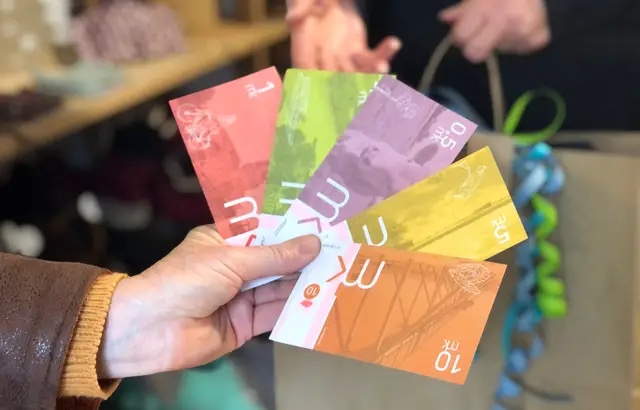Mobile Vegetable Garden
CHALLENGES ADDRESSED
Score impact
Nature
Wellbeing
Health
Mobility
Participation
Economy
DESCRIPTION
Mobile vegetable garden is a modular and moveable solution for growing food and plants. It can be assembled and moved by users in order to customize open public and private spaces according to their desires. The solution can be complemented with an augmented reality app that citizens can use to get information about the plants species and that can support awareness rising and educational activities.
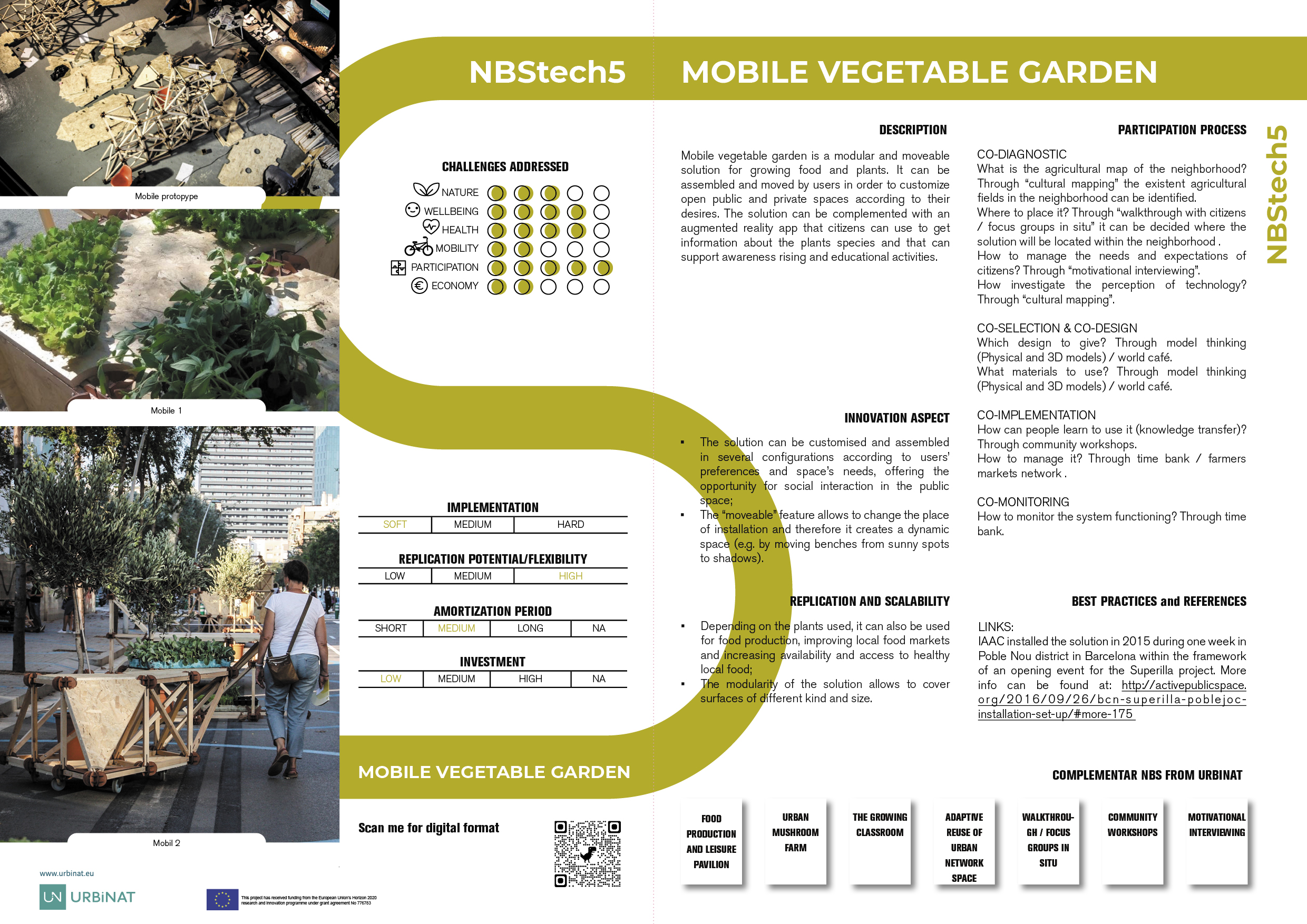
[PDF Download] Mobile Vegetable Garden
Mobile vegetable garden is a modular and moveable solution for growing food and plants. It can be assembled and moved by users in order to customize open public and private spaces according to their desires. The solution can be complemented with an augmented reality app that citizens can use to get information about the plants species and that can support awareness rising and educational activities.
INNOVATION ASPECT
• The solution can be customised and assembled in several configurations according to users’ preferences and space’s needs, offering the opportunity for social interaction in the public space;
• The “moveable” feature allows changing the place of installation and therefore it creates a dynamic space (e.g. by moving benches from sunny spots to shadows).
REPLICATION AND SCALABILITY
• Depending on the plants used, it can also be used for food production, improving local food markets and increasing availability and access to healthy local food;
• The modularity of the solution allows to cover surfaces of different kind and size.
PARTICIPATION PROCESS

-
1
CO-DIAGNOSTIC
What is the agricultural map of the neighborhood? Through “cultural mapping” the existent agricultural fields in the neighborhood can be identified. Where to place it? Through “walkthrough with citizens / focus groups in situ” it can be decided where the solution will be located within the neighborhood. How to manage the needs and expectations of citizens? Through “motivational interviewing”. How investigate the perception of technology? Through “cultural mapping”.
-
2
CO-SELECTION & CO-DESIGN
Which design to give? Through model thinking (Physical and 3D models) / world café. What materials to use? Through model thinking (Physical and 3D models) / world café.
-
3
CO-IMPLEMENTATION
How can people learn to use it (knowledge transfer)? Through community workshops. How to manage it? Through time bank / farmers markets network.
-
4
CO-MONITORING
How to monitor the system’s functioning?
BEST PRACTICES & REFERENCES
LINKS:
IAAC installed the solution in 2015 during one week in Poble Nou district in Barcelona within the framework of an opening event for the Superilla project.
More info can be HERE


